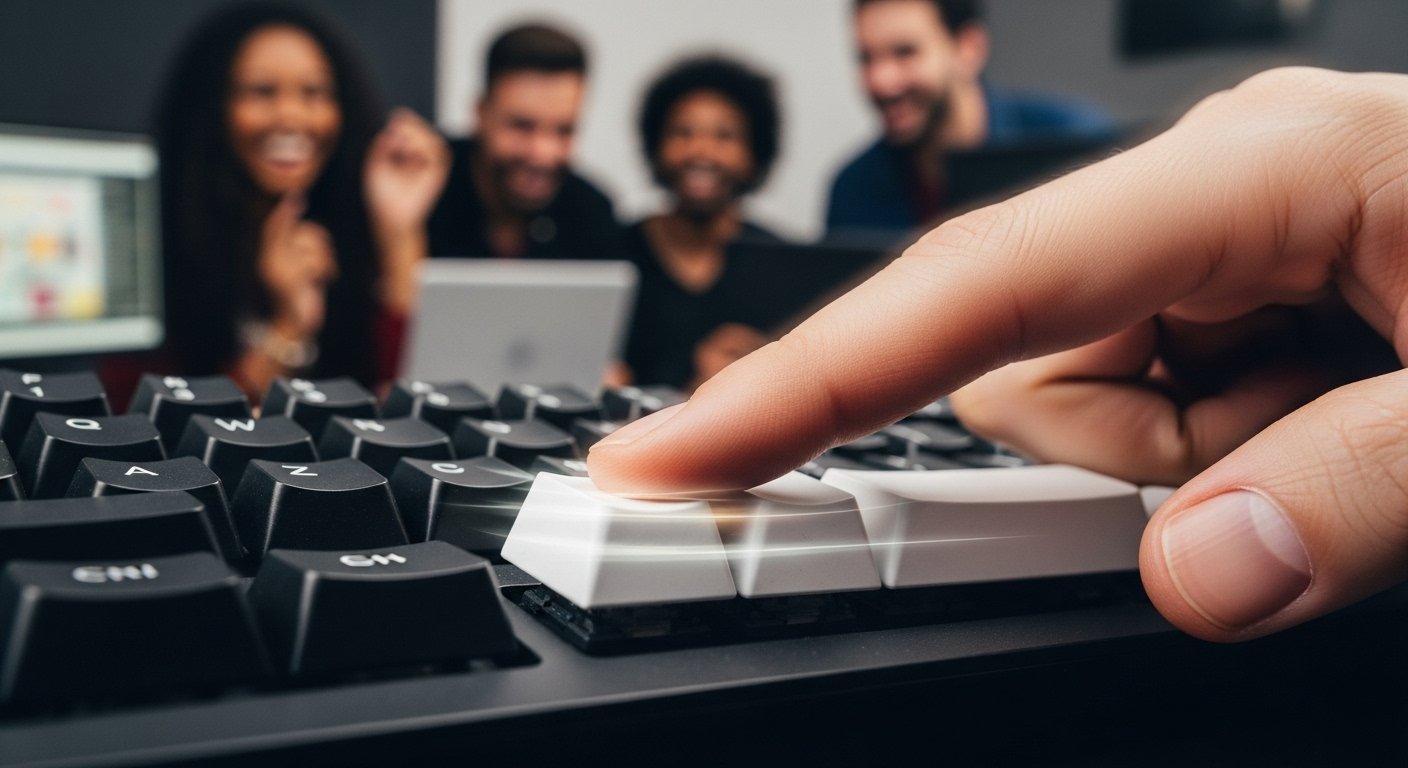It’s a familiar scene: a lull in an online meeting or a quiet moment on a group chat with friends. Suddenly, a simple question is thrown into the mix—”Who’s the fastest?” The debate ignites, not about running or racing, but about something far more immediate and hilarious: who has the fastest finger on the keyboard? What follows is a frantic, laugh-filled flurry of tapping as everyone pits their speed against each other. This friendly rivalry is the heart and soul of The Spacebar Challenge, a simple yet addictive test that has become a favorite way for people to compete and connect online. This guide is your ultimate ticket to that world of fun, providing you with everything you need to not just test your speed, but to uncover pro-level techniques to improve it dramatically.
This isn’t just about hitting a key; it’s about unlocking your peak performance in a fun, measurable way. We’re going to dive deep into the world of this simple online challenge, exploring the best methods for increasing your tapping speed and showing you how to turn it into a full-blown tournament with your friends, family, or coworkers. You will learn the difference between various tapping styles, understand the importance of ergonomics to avoid strain, and discover what a truly “good” score looks like. Before we get into the advanced techniques, the best place to start is to find out where you stand right now. Take 30 seconds to try the space bar click test and get your baseline score. By the end of this guide, you won’t just be a participant in the challenge; you’ll be the one setting the high score everyone else is trying to beat.
Of course. Here is the next section, with all required links included.
What Exactly is The Spacebar Challenge?
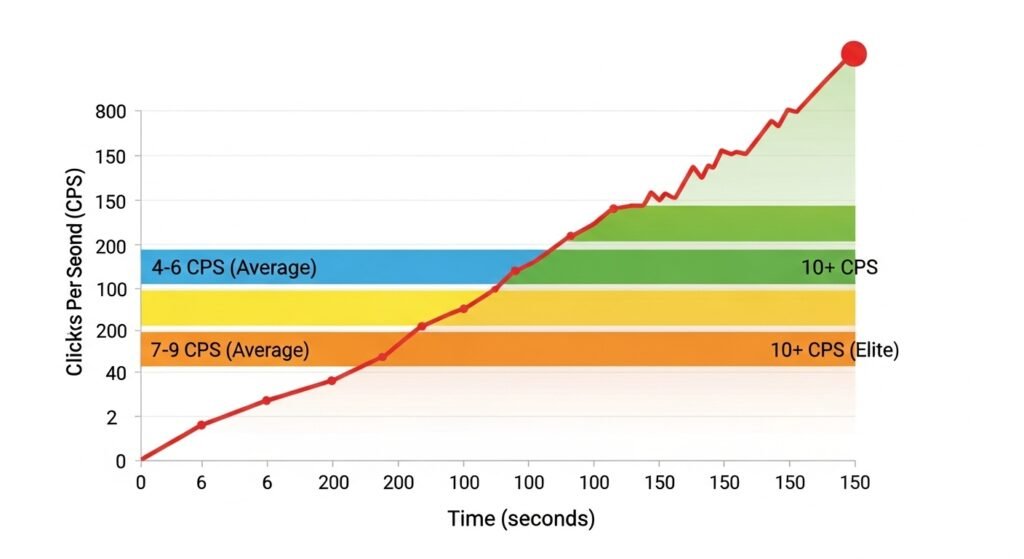
At its core, The Spacebar Challenge is a simple, web-based game or tool that measures how many times you can press your spacebar key within a set time limit. It’s a pure test of tapping speed and endurance, converting your physical actions into a clear, measurable score: your Clicks Per Second (CPS). There are no complex rules, no steep learning curves, and no special equipment needed—just you, your keyboard, and a desire to go fast.
More Than a Game: The Simple Appeal of a Keystroke Speed Test
The beauty of the challenge lies in its absolute simplicity. In a world of complex video games and skill-based activities, this test strips everything away to focus on one raw metric: speed. It’s universally accessible to anyone with a computer, making it the perfect quick break or a fun distraction. This taps into a fundamental human desire for competition and self-improvement. Seeing your score in real-time provides instant feedback, making you want to try just one more time to beat your personal best. It’s a perfect example of gamification, turning a mundane action into an engaging and addictive activity. This concept of measuring raw input speed is also seen in a broader keyboard CPS test, which evaluates your speed across all keys.
The TikTok Trend That Made a Keyboard Key Famous
While spacebar counters have existed for years, the challenge exploded into a global phenomenon thanks to social media platforms, especially TikTok. The format was perfect for short, shareable videos: a user would record their screen and their frantic hands as they took the test, revealing their high score at the end and challenging their followers to beat it. This created a viral loop of competition that spread like wildfire. As explained by media experts at platforms like Forbes, which often analyzes viral marketing, this type of user-driven challenge is incredibly effective at creating massive engagement. Suddenly, a humble keyboard key was the star of a worldwide speed competition.
A Personal Story: How a 10-Second Challenge Settled a Month-Long Debate
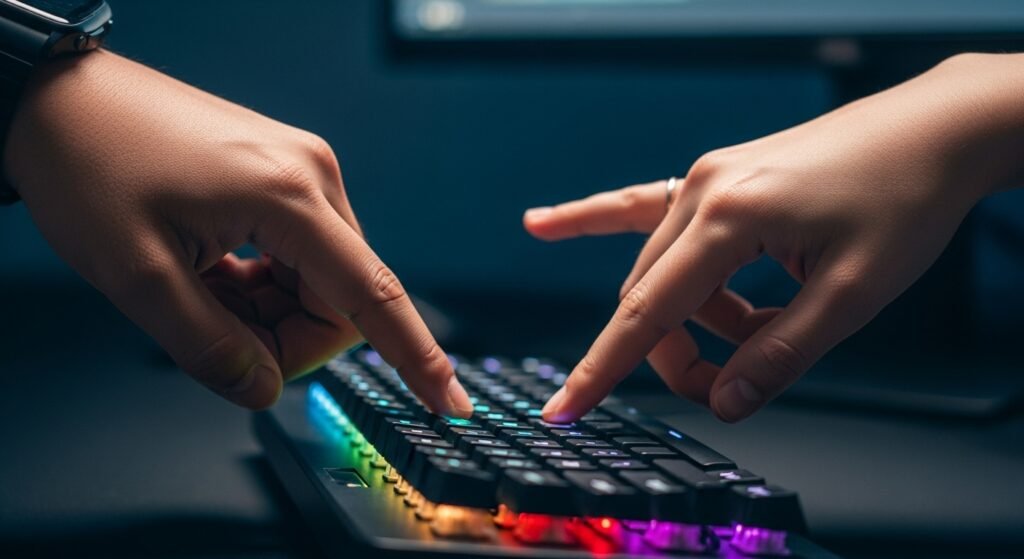
For months, my coworker and I had a running argument about who was the “faster” worker. It was a silly, good-natured rivalry. He claimed his typing speed made him quicker, while I argued my speed with keyboard shortcuts gave me the edge. The debate went nowhere until one slow afternoon, I sent him a link to a spacebar test. I said, “Forget everything else. You, me, 10 seconds. Fastest thumb wins.” The frantic tapping started. I managed a respectable 68 hits, feeling pretty proud of myself. A moment later, a screenshot came back from him: 81. I was completely humbled. The argument was settled instantly, not by logic, but by a pure test of speed. We spent the rest of the day laughing about it, with everyone else in the office trying to beat his score.
How to Take The Spacebar Test: Your First Attempt
Jumping into The Spacebar Challenge is incredibly easy, but a little preparation can help you get the most accurate and impressive score. Think of this as stepping up to the plate in a friendly game of baseball; you want to know where the bat is and what you’re aiming for. This section will walk you through your very first test, from finding the right tool to understanding what your final score actually means.
Step 1: Finding the Right “Arena” (The Spacebar Counter Tool)
First, you need a place to compete. There are countless websites that host a spacebar counter, but a good one should be simple, responsive, and free of distracting ads. You are looking for a tool that gives you a clear timer and an accurate, real-time count of your hits. The best way to get started is with a dedicated space bar click test, which is designed specifically for this challenge. This ensures that every press is registered instantly, giving you a true measure of your speed.
Step 2: Setting Your Timer (10, 30, or 60 Seconds?)
Most spacebar tests allow you to choose a time limit. Which one should you pick?
- 10 Seconds: This is a pure test of explosive speed. It’s great for quick competitions and for finding your maximum tapping velocity.
- 30 Seconds: This is the sweet spot for a combined test of speed and stamina. It’s long enough that you can’t just sprint the whole way, requiring some pacing.
- 60 Seconds: This is an endurance run. It’s less about your peak speed and more about your ability to maintain a consistent rhythm without fatiguing.
For your very first attempt, the 10-second test is recommended. It’s the best way to get a quick, encouraging baseline score without getting tired.
Step 3: Your First Run – Don’t Think, Just Tap!
You’ve found your arena and set your timer. Now for the fun part. For this first attempt, don’t worry about technique. The goal is just to get a number on the board.
- Place your hand comfortably over the spacebar.
- Take a deep breath and relax your shoulders.
- When you’re ready, start the timer and just go for it! Tap as fast as you can until the time runs out.
- Look at your score. That’s your starting point!
Understanding Your Score: What is a “Good” CPS?
Your score will likely be displayed as both a total number of hits and a CPS (Clicks Per Second) value. The CPS is the most important metric for comparing your speed across different time limits. Here’s a general breakdown of what the scores mean:
- 4-6 CPS: This is an average, casual tapping speed. Most people will fall into this range on their first try.
- 7-9 CPS: This is a fast tapper. A score in this range is impressive and shows you have quick fingers.
- 10+ CPS: This is elite speed. Reaching 10 or more clicks per second on the spacebar is exceptionally fast and puts you in the top tier of players.
Don’t be discouraged if your score is lower than you expected. Like any other skill, your speed can be improved with the techniques we’ll cover in the next section. Your journey from an average tapper to a speed champion starts now.
From Fumbling Fingers to Lightning Thumbs: 3 Pro Techniques to Improve Your Speed
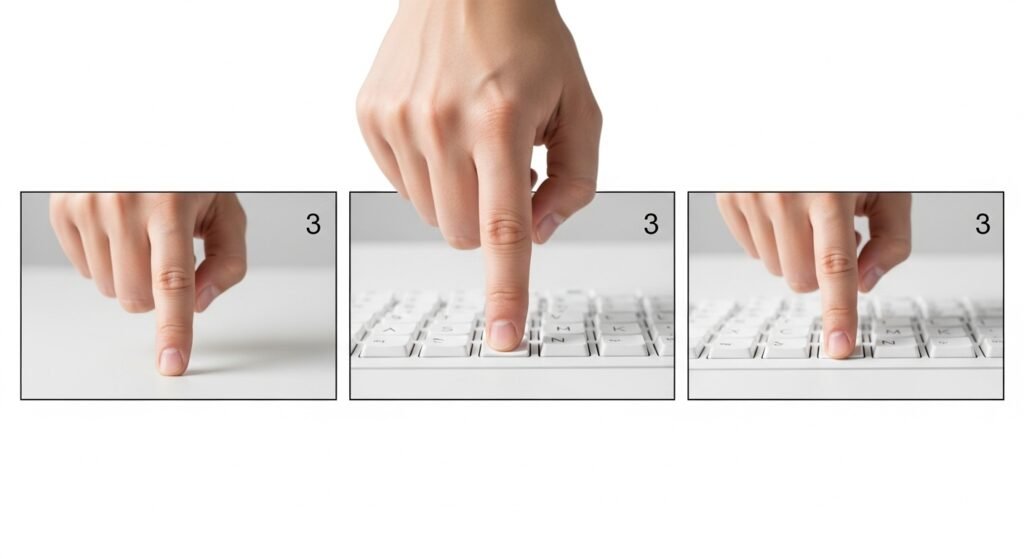
The secret to a high score in The Spacebar Challenge isn’t about hitting the key harder; it’s about hitting it smarter. Just like in any sport, technique is the key that unlocks your true potential. Brute force will only lead to a tired hand and a mediocre score. By adopting a more efficient method, you can dramatically increase your CPS with less effort. Here are three pro-level techniques to experiment with.
Technique 1: The “Flat Thumb” Method for Stability and Stamina
This is the most common and reliable technique for consistent speed. Instead of using the tip of your thumb, you use the flat, broad pad of it.
- How to do it: Rest your wrist lightly on your desk or the edge of your laptop. Lay your thumb flat across the spacebar so the entire pad makes contact. The tapping motion should be small and come from your thumb joint, not your whole hand.
- Why it works: This method provides maximum stability. The large contact area ensures you never miss the key, and the relaxed wrist position prevents fatigue, making it the ideal technique for longer challenges of 30 or 60 seconds.
Technique 2: The “Two-Thumb Tremor” for Maximum Speed
This advanced technique is borrowed from the world of high-speed mouse clicking and is designed for one thing: explosive, short-burst speed.
- How to do it: Hover both of your thumbs just over the spacebar. Instead of distinct presses, you create a rapid, vibrating motion by quickly alternating taps from both thumbs. The movement is similar to the drumming motion used by gamers in the Kohi Click Test to achieve high CPS.
- Why it works: By using two thumbs, you cut the reset time for a single digit in half. This method is all about leveraging fast-twitch muscle fibers, which, as explained by sports science resources like those from UCLA Health, are responsible for quick, powerful movements. It is difficult to maintain, but it’s the key to setting records in a 5 or 10-second test.
Technique 3: The “Index Finger Switch” for a Different Muscle Group
If thumb tapping feels slow or awkward, your anatomy might be better suited for a different approach. Using your index finger(s) can be a game-changer.
- How to do it: Position your hand as if you were about to type, but place your index finger (or both index fingers) on the spacebar. Use a light, quick tapping motion, similar to how you would type a normal key.
- Why it works: For many people, the muscles that control the index finger are faster and more dextrous than those that control the thumb. This method can feel more natural and allow for a higher top speed. You can even try alternating between two index fingers for an even greater advantage. This is a great way to improve your score on any keyboard CPS test.
The Most Common Beginner Mistake That’s Killing Your Score
The number one mistake that holds people back is tension. In an effort to go faster, beginners often tense their entire hand, wrist, and forearm, stamping down hard on the spacebar with each press. This is a disaster for your speed. A tense muscle moves slower, fatigues faster, and has a longer reset time.
The Fix: Relax. The tapping motion should be as small and light as possible. You only need to press the key just enough to register a keystroke. Focus on making the movement come from your finger or thumb joint, not your arm. If you feel your wrist getting tight, stop, shake out your hand, and start again, focusing only on being loose and relaxed.
Setting Up Your Own Competition: A Guide for Friends, Family, and Offices
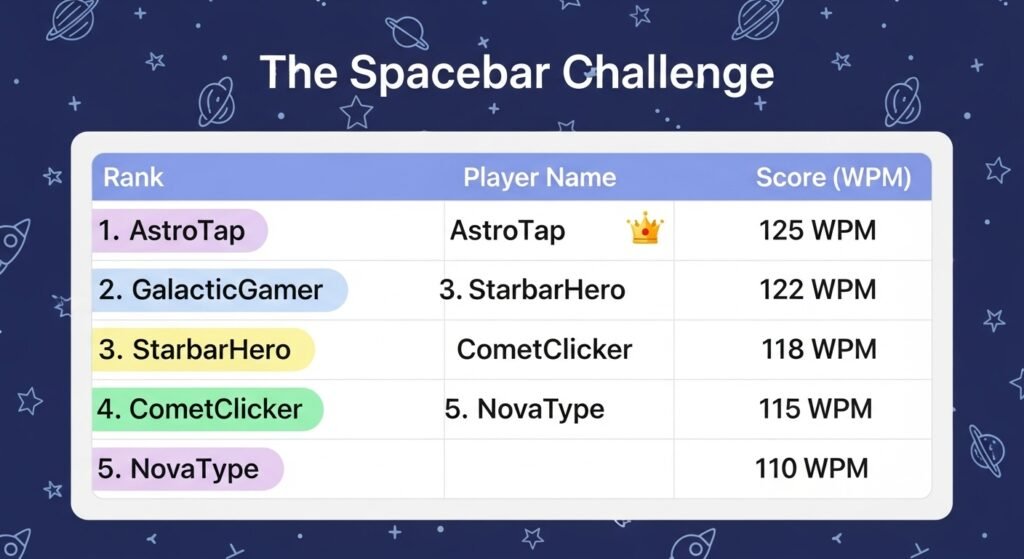
The Spacebar Challenge is a solo activity, but it’s a social phenomenon. The real magic happens when you move beyond beating your own high score and start competing against others. The bragging rights, the friendly trash talk, and the collective pursuit of a new record can turn a simple speed test into an unforgettable event. Setting up your own tournament is easy and is the best way to share the fun.
How to Host a Virtual Spacebar Tournament
With a few simple steps, you can organize a competition that works perfectly for remote teams, groups of friends on Discord, or family across the country.
- Choose Your Arena and Rules: First, everyone must agree to use the same tool to ensure a level playing field. Designate a single webpage, like the space bar click test, as the official tournament site. Decide on the time limit—10 seconds for a quick-fire round or 30 seconds for a test of endurance.
- Gather Your Competitors: Create an event on your platform of choice, whether it’s a Slack channel, a Discord server, or a group chat. Announce the “Official Spacebar Championship” and set a time.
- Compete and Share: When it’s time to play, have everyone take the test. The easiest way to verify scores is to have each person take a screenshot of their result and post it in the chat. For extra drama, have competitors share their screens on a video call so everyone can watch the frantic tapping live!
Creating a Leaderboard to Fuel the Rivalry
A competition is nothing without a leaderboard. It’s the official record of who’s on top and gives everyone else a target to aim for. You don’t need any fancy software:
- For Offices/Groups: A shared Google Sheet is perfect. Create a simple table with names and their best scores.
- For Discord: Pin a message in a dedicated channel and update it with the top 3 or top 5 scores as they come in.
- In-Person: Nothing beats a classic whiteboard. Write the reigning champion’s name at the top in big letters.
This visual ranking is a powerful motivator. The psychology of gamification, as studied by user experience experts like the Nielsen Norman Group, shows that leaderboards significantly increase engagement by tapping into our natural desire for status and achievement.
Fun “House Rules” to Make it More Interesting
Once everyone has set a baseline score, you can introduce fun variations to keep the challenge fresh and exciting.
Of course. While the challenge is fun, it’s important to play smart. Let’s talk about how to stay fast and healthy.
Health & Ergonomics: How to Tap Fast Without the Strain
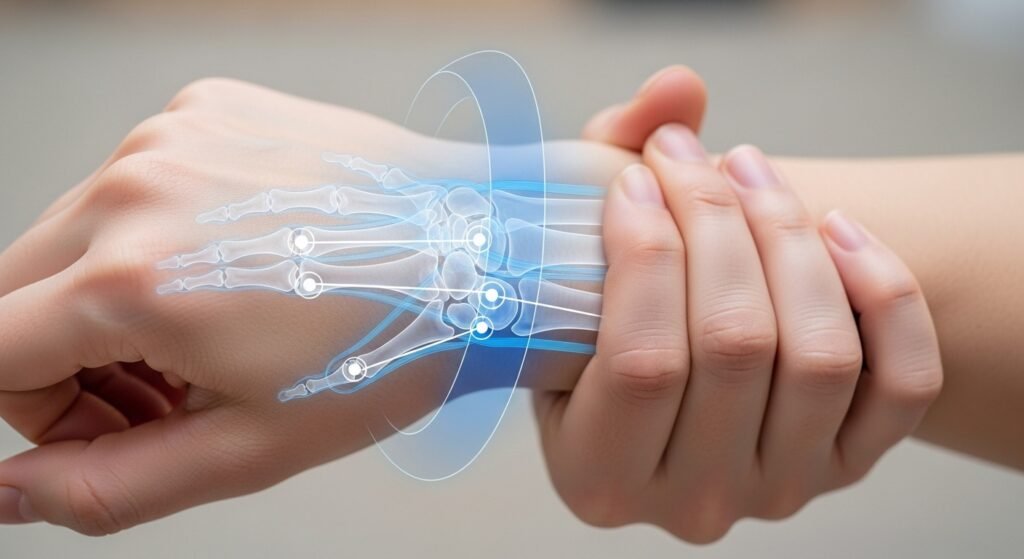
The quest for a high score in The Spacebar Challenge should be fun, not painful. Like any activity involving rapid, repetitive motion, there’s a small but real risk of physical strain if you don’t use proper technique. The fastest players aren’t the ones who use the most force; they are the ones who are the most efficient and relaxed. Following a few simple ergonomic principles will not only protect you from discomfort but will also help you achieve a higher score.
The #1 Rule: Why a Relaxed Wrist is a Fast Wrist
If you learn only one thing about technique, let it be this: tension is the enemy of speed. When you get competitive, your first instinct is to tense up your hand, wrist, and forearm, trying to power through the challenge. This is the single biggest mistake you can make. A tense muscle is a slow muscle. It fights against itself and fatigues in seconds.
The key to a high CPS is to stay as loose and relaxed as possible. The tapping motion should be light and come from your thumb or finger joints, not from your whole arm. You only need to press the spacebar enough for the keystroke to register. Any extra force is wasted energy that slows you down.
Two Simple Stretches to Do Before Any Speed Test
Think of yourself as an athlete warming up for an event. These two quick stretches take less than 30 seconds and can make a huge difference in your performance and comfort.
- Wrist Circles: Clasp your hands together by interlocking your fingers. Gently rotate your wrists in a circular motion, first clockwise for 10-15 seconds, and then counter-clockwise for another 10-15 seconds. This warms up the joints and improves flexibility.
- Finger Fan and Clench: Hold your hand out and spread your fingers as wide as you can, like a fan. Hold for five seconds. Then, make a gentle, relaxed fist. Repeat this cycle 5 times. This helps improve blood flow and warms up the small tendons in your hand.
A Warning About RSI (Repetitive Strain Injury)
While a few quick rounds of the spacebar challenge are very unlikely to cause any harm, it’s important to be aware of the risks of any repetitive activity. Repetitive Strain Injury (RSI) is a term for pain and discomfort in your muscles, nerves, and tendons caused by overuse.
If you practice for long periods, listen to your body. If you feel any sharp pain, persistent aching, numbness, or tingling in your fingers, hand, or wrist, you must stop immediately. These are warning signs that you are putting too much stress on your body. Your long-term health is infinitely more important than a new high score. For more detailed information on preventing these types of injuries, authoritative sources like the Centers for Disease Control and Prevention (CDC) offer excellent ergonomic guidelines.
Frequently Asked Questions (FAQ)
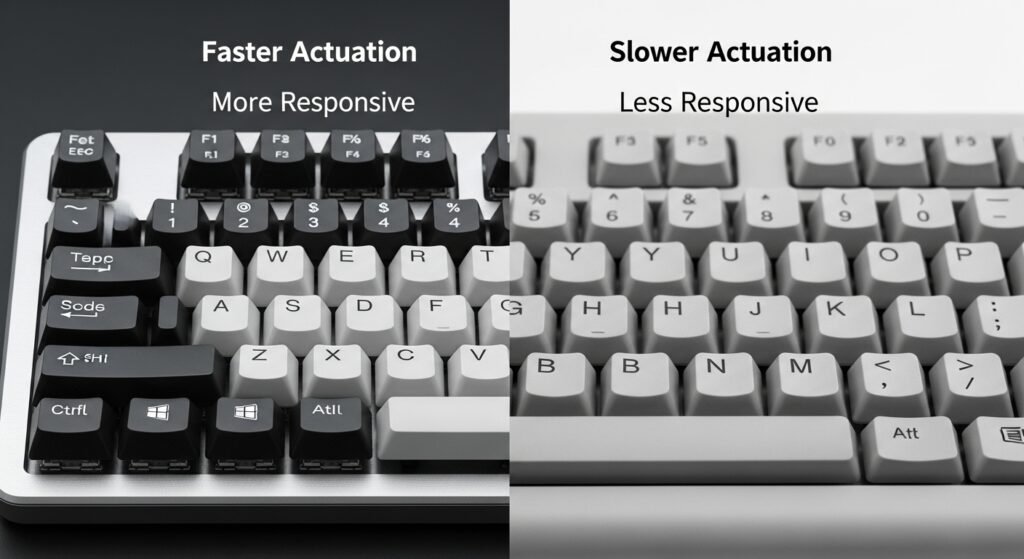
You’ve learned the techniques and how to host your own competition, but a few specific questions might still be lingering. Here are the direct answers to the most common queries about The Spacebar Challenge.
What is the world record for the spacebar challenge?
Is a higher spacebar CPS useful for gaming?
Can I do the spacebar challenge on my phone?
Does the type of keyboard I have make a difference?
Are there other fun keyboard challenges to try?
Conclusion
You now have the complete playbook. We’ve taken you from a first, clumsy attempt at the spacebar test, through pro-level tapping techniques, and even shown you how to become the champion of your own friendly tournament. You’ve learned that the secret to a high score in The Spacebar Challenge isn’t about brute force or frantic energy, but about relaxed, efficient, and intelligent skill. The frantic, competitive fun is no longer something you just have to watch; it’s something you can now dominate.
Remember that initial scene—the friendly challenge thrown down in a group chat, followed by a flurry of tapping? You’re no longer just another participant. You are now equipped to be the one who drops a screenshot of an unbeatable high score, leaving everyone else in stunned, laughing silence. The ultimate guide is complete, but your own story is just beginning. So, what are you waiting for? Go take your first 10-second test right now, and then ask yourself:
Who’s the first person you’re going to challenge to beat your new high score?

Hello, I’m John Harbour, a software developer passionate about creating innovative and accessible AI tools. As the creator of cps-checker.com, I enjoy building useful software and writing blogs to help people get the most out of my creations.

